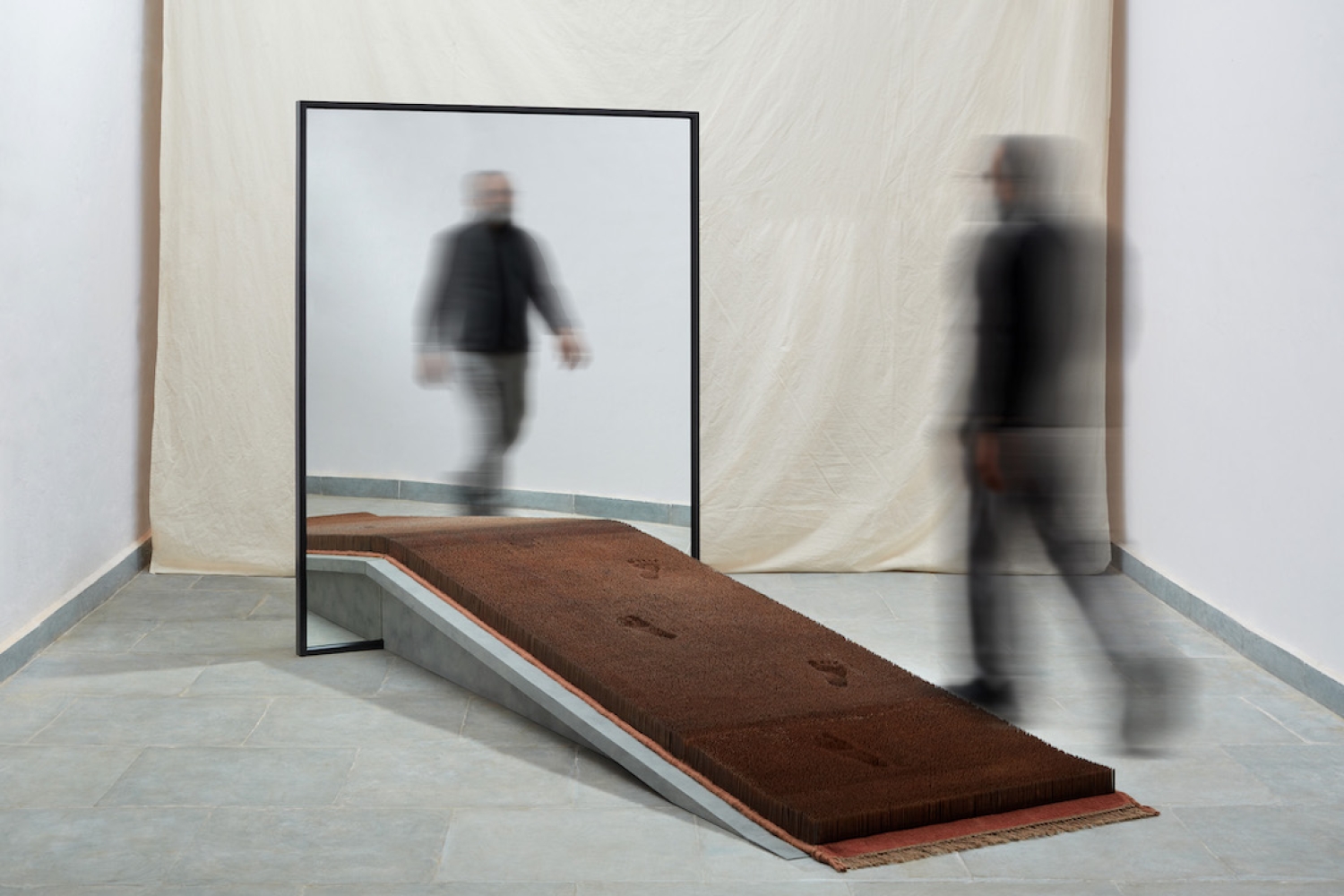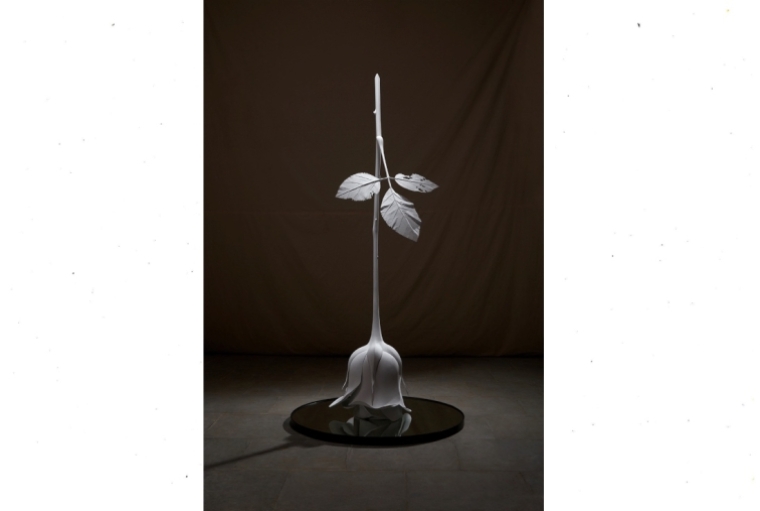

“I think I always knew I am an artist,” reveals Sunil Gawde of his journey with art. “When I was in school, most friends would come to me with a request to draw something on their book, maybe their own portrait or a landscape or a film star, whatever they fancied! Small things like this made me realise that I am able to translate on paper what I have visualised. That my art and I are not two different entities.” The eminent artist is widely acclaimed for his sculptural and kinetic installations, with his work having been showcased at galleries, museums, fairs, and biennales across the world. Now, he has returned with a solo show in India after a gap of seventeen years. Titled It Goes On…, Gallery Espace is currently exhibiting the show, until January 19, 2023.
We spoke to the artist to know more about his journey with art, and the new, ongoing show.
Do you remember your first memory of art making? Or your first profound memory of being affected by art?
My family hails from Malvan, which is in the coastal belt of Maharashtra. I would often visit during my holidays. One time, when I was in my fifth grade in school, the drawing teacher asked us to draw our experiences of the holidays on the black board. I went up and drew the swinging trees, coconut falling, the river … all that was fresh and had an impact on my mind were reflected in my drawing. Then I halted and drew a trunk, typical of the kind people carry in a bus with a huge lock on it, in perspective and thickness, and soft luggage with rope tied around it. The teacher appreciated my creativity, my observations and found something different in me, and it is at that moment that it became clear to me that I was born to be an artist. I could say that was my profound memory of discovering the artist in me.
After all these years, how would you define your relationship with art?
It's simple. It is like breathing oxygen. It is like if you open your eyes, you see art everywhere. Whatever you see, you process that in your mind in a different way. And if you close your eyes, it's still going on, because you don't see through your open eyes, actually, you see with your mind. So that is always engaged.
And, in retrospect, how have your practice and craft evolved?
I went to JJ School of Art to study art. This is 1975 to 80, and I was a good student! I trained in painting, not sculpture or the engineering part of it. JJ is known to hone your skills in realistic drawing, and interestingly, at the same time, the predominant language was abstract painting. I was totally drawn to it, as the atmosphere at my home and my cultural background were connected to spiritualism. My personality, too, is the same. I was drawn to form and formlessness. I had a few exhibitions within the genre of abstraction where I showed abstract paintings.
But then, I experienced an innate restlessness. I started seeing them like animated frames, but in abstract form. I think the genesis of kinetics or sculptures started from there, maybe in my subconscious mind. In 1998, I had a show called Oblique, where I exhibited my painting alongside some readymade objects. I created humour with mundane objects by adding some text to them, as if trying to have a communication with them. It may look like mundane objects which had the HASYA rasa to it, but deep inside this became my own expression.
Sculptures and kinetic installations have become an important medium for you. What about the medium has sustained your imagination so far?
I always like to explore. One learns something or the other in each moment that impacts you. I never want to get settled, caged. I don't believe in repeating or copying myself. Sometimes, one may explore the same idea again and again, until one is ready to move on. When I feel I am getting fixated, it starts bothering me. I don't like to be in a comfortable zone. I like to break that. So, when I was doing abstract painting, I used the impasto technique and it gradually gravitated towards minimalism. Then I reached a saturation point. I wanted to push my boundaries each time, do something new and somehow it led to sculpture. I wanted to see my work manifested in 3D forms.
As it happened, Grand Hyatt were building a collection and had asked a few select artists to create artworks for them. I proposed an installation, 6’ x 12’ x 2’ in dimension. Although they were excited about the project, it didn’t get manifested for whatever reason. Instead, I did some paintings for them. But I had this urgent need to see the work in physical form. So with the money I received from the paintings, I went on to create the work Alliteration, not knowing where it will be shown or stored, et cetera. Ultimately, it was shown at the Venice Biennale in 2009. My inner calling was so genuine and my belief so strong about the idea that I had to manifest it. That particular work had many moons waxing and waning on one side, and on the other, the machinery that made it work. This work needed to be a kinetic sculpture, and so it became one. My works on their own demand a certain medium and I obey it. They come with their fate.

What kind of themes or concerns do you predominantly gravitate towards exploring through your work now?
Human life is full of experiences, and I feel my goal is to find my centre. And if one is of an introspective nature, one tries to process it in different ways. In my case, it is through my art, my creativity. I want to manifest what I imagine in various ways …towards self-realisation, self-introspection, towards my centre. Although I am known to make kinetic artworks, there are a of couple of works in the show which are kinetic but you cannot see the movement. And if you tell the viewer that they are moving, they don't believe you. I am just prodding them to realise the limits of the eyes. One must look beyond what one sees with the eye.
Your show at Gallery Espace, It Goes On…, is an evolution of id-od / inner dimension-outer dimension. Please lend us some insight into the new sculptures added to this body of works, and how they reflect an evolution from the original body of works.
I would use the analogy of an amoeba which branches out as different bodies and then establishes as an individual identity. My works stems from my own analysis of looking into myself. and time plays a major factor. ID- OD, which stands for inner dimension - outside dimension, is a continuous process and is relevant at all times; it is an ongoing quest. This process of travel over time is connected to my centre, which keeps me inspired to witness the creation of new artworks.
My life is not different from my art, so it goes on all the time. It doesn't fall in a kind of project or title of an exhibition. It is an ongoing process. Whatever I created is an extension from the last exhibition, or we may say it as a journey. It teaches me with every moment. Every time, a different thing has an impact on me. These impacts propel me to create artworks, to manifest the experiences that I have internalised.
Lastly, what do you hope the viewers take away from your show at Gallery Espace?
May be self-introspection, the ability to see and understand things a little differently. Not just with the eyes but to delve a little deeper, pause maybe. A point of view not necessarily the artist’s but their own. I hope they take a piece of it with them.
Text Nidhi Verma
Date 14-12-2022